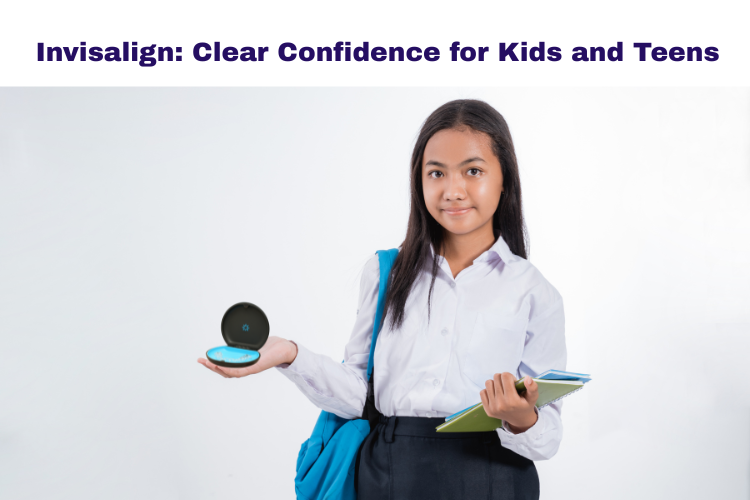Schedule Appointment




Clear aligners have revolutionized orthodontic care, providing an almost invisible choice to the standard braces. When more parents look for comfortable, beautiful solutions for their teens and kids, the most frequent question is: Is Invisalign good for kids and adolescents?
In this guide, we’ll explore whether it is a good choice for young patients, what age is appropriate, and key points parents should consider before making a decision.
It is a clear aligner brand intended to straighten teeth without using metal wires or brackets. The aligners are individually tailored and worn over the teeth to slowly shift them to a desired position. They can be removed, almost invisible, and usually replaced every 1–2 weeks with a new set as the treatment continues.
It has a particular type called Invisalign First for children aged 6 to 10. Phase 1 treatment is early orthodontic treatment that covers problems such as crowding, spacing, and jaw growth prior to eruption of all permanent teeth.
However, it first requires a high level of responsibility. Kids must be able to follow directions and wear the aligners for the recommended 20–22 hours per day.
Teenagers are often excellent candidates due to improved compliance and maturity. Teen aligners are specially designed with features that suit growing patients:
Before choosing Invisalign for your child or teen, keep these important factors in mind:
Success heavily depends on consistent use. Children or teens who remove aligners often or forget to wear them may not see effective results.
Kids need to brush and floss after every meal before putting aligners back in. Poor hygiene can lead to cavities or gum issues.
The treatment may be more expensive than traditional braces. Check with your dental insurance to understand what portion is covered.
Invisalign can treat mild to moderate alignment issues. Severe bite problems or complex cases may still require traditional braces.
Only an orthodontist can assess whether it is suitable for your child’s specific dental needs. Early consultations help determine the best time to start treatment.
| Pros | Cons |
| Nearly invisible | Requires discipline |
| Removable for meals and brushing | Can be lost easily |
| Comfortable to wear | May not suit all dental cases |
| Fewer dental emergencies | Higher upfront cost |
Every child is different. Some may benefit from early intervention (ages 6–10), while others are better suited for Invisalign Teen after most permanent teeth have erupted (ages 12+). An orthodontic evaluation is the best way to decide.
1. What age can a child start Invisalign?
Invisalign First is designed for children ages 6–10 who need early orthodontic intervention.
2. Is Invisalign better than braces for teens?
It depends on the dental issue and the teen’s ability to wear aligners consistently. Invisalign is great for mild to moderate cases.
3. Can kids eat with Invisalign?
No. Aligners must be removed before eating or drinking anything besides water.
4. What happens if my child loses an aligner?
Invisalign Teen often includes free replacement aligners. Contact your orthodontist immediately.
5. Does Invisalign hurt?
Mild discomfort is normal when starting a new set of aligners but usually subsides within a day or two.
6. How long is the treatment duration?
Treatment length varies, but most cases take 12–18 months depending on the complexity.
Invisalign can be a highly effective and convenient option for kids and teens—when used correctly. With the right commitment and guidance, young patients can enjoy the benefits of straighter teeth without the drawbacks of metal braces.
Visit Dr. Gowds Dental at a Branch Near You
Gachibowli Branch
Madhapur Branch
Koti Branch
Puppalaguda Branch